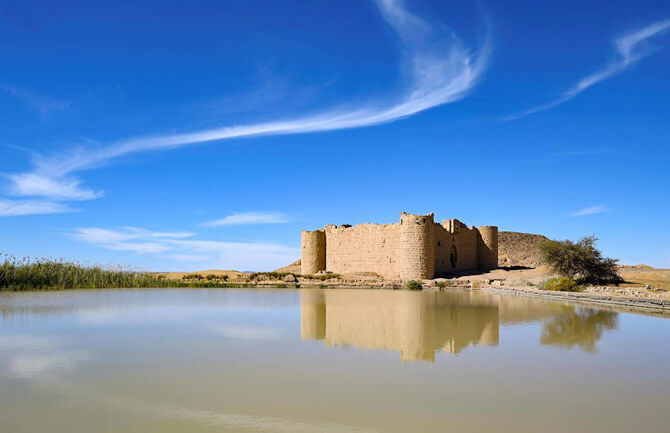Nestled within the Tabuk region, Al-Muazzam Fort stands as a remarkable testament to Islamic architecture, symbolizing the dedication of the late Islamic epochs to aiding pilgrims along the Levant route.
Founded in 1031 A.H. (1622 A.D.), Al-Muazzam Fort originally served as a haven for weary pilgrims and Umrah performers seeking respite. Additionally, it functioned as a strategic military stronghold, safeguarding the passage between Madinah and Makkah.
Spanning an expansive area of 10,000 square meters, this fort's rectangular walls encapsulate over four centuries of memories. The central courtyard is encircled by a symphony of chambers, staircases, and elevated passages, weaving together a tapestry of architectural elegance.
The construction of Al-Muazzam Fort artfully employed refined stones, fashioning a two-story edifice crowned by a protective wall towering above the inner corridor. Adorned with four foundation inscriptions, this fortress, crafted from reddish-yellow carved stone, hosts a panorama of historical significance.
The grand entrance of Al-Muazzam Fort boasts a distinctive arch and defensive apertures, exemplifying its strategic prowess.
Throughout its history, the fort has played host to renowned travelers and explorers, including Julius Oetting from Germany and Charles Huber from France, who embarked on a journey in 1301 A.H. (1884 A.D.) documented in the book "A Journey in the Arabian Peninsula." This timeless landmark invites visitors to traverse history and revel in its architectural splendor.

